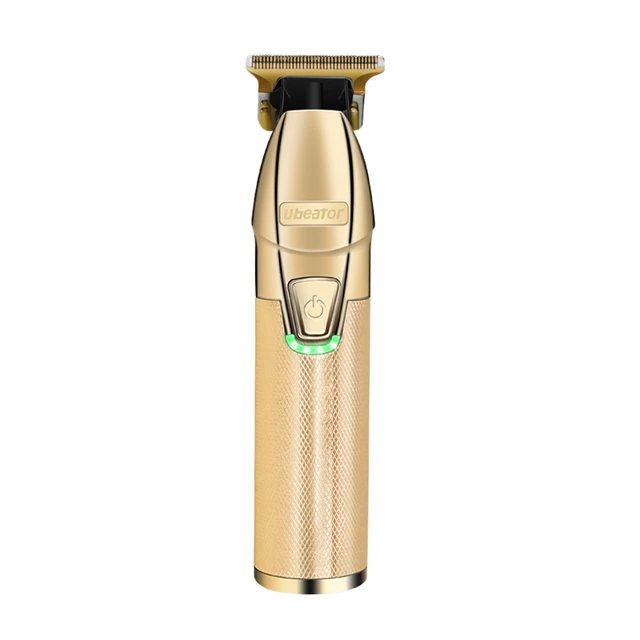Introduction:
Cutting your own hair can be a convenient and cost-effective way to maintain your hairstyle without having to visit a salon. While it may seem intimidating at first, with the right approach and techniques, you can achieve a satisfactory result. The key to successfully cutting your own hair is preparation, having the right tools, and following a step-by-step process. In this guide, we will explore the best way to cut your own hair, including preparation, sectioning, cutting techniques, and finishing touches. By following these guidelines, you can confidently achieve a neat and personalized haircut from the comfort of your own home.

What is the best way to cut your own hair?
Gather the Required Tools:
Before starting the haircut, gather all the necessary tools to ensure a smooth process. Consider the following items:
a. Clippers or Scissors: Depending on your desired hairstyle, choose between clippers for shorter cuts or scissors for longer styles.
b. Comb: Use a wide-toothed comb to detangle and section your hair.
c. Mirror: Have a handheld mirror and a larger wall-mounted mirror to see all angles of your head.
d. Hair Clips or Ties: Use hair clips or ties to section and secure your hair during the cutting process.
e. Towel or Cape: Lay a towel or a hair-cutting cape over your shoulders to catch loose hair and protect your clothing.
Preparation:
Preparation is crucial to ensure a successful haircut. Consider the following steps:
a. Clean and Dry Hair: Start with clean and dry hair. Washing and drying your hair will remove any product buildup or oils, making it easier to work with and ensuring a better cut.
b. Choose a Suitable Location: Find a well-lit area with a comfortable workspace. Consider using a stool or chair, allowing easy access to all angles of your head.
c. Dampen the Hair (Optional): If you prefer cutting slightly damp hair, lightly mist your hair with water using a spray bottle. This can make the hair more manageable and easier to cut.
Sectioning the Hair:
Sectioning your hair helps create a structured approach and ensures an even cut. Consider these steps:
a. Divide Your Hair: Use the comb to divide your hair into manageable sections. Start by creating a center parting and then divide each side into two sections, one in front of the ear and one behind.
b. Secure the Sections: Use hair clips or ties to secure each section of hair, keeping it out of the way while you work on the other sections.
Cutting Techniques:
The cutting technique will depend on your desired hairstyle. Consider the following techniques:
a. Trimming the Ends: If you have long hair and want to trim the ends, bring the hair forward and cut small sections at a time. Hold the hair between your fingers and trim any split ends or damaged sections.
b. Using Clippers for Shorter Cuts: If you prefer a shorter cut using clippers, start with a longer guard attachment and gradually work your way down in length. Begin by cutting the hair around the sides and back, moving in an upward motion against the hair growth. Use a mirror to ensure an even and balanced cut.
c. Blending the Hair: To achieve a blended look between different hair lengths, use a technique called feathering. Gradually decrease the clippers‘ height as you move from the longer sections to the shorter sections. This creates a smooth transition and avoids harsh lines.
Mirror Usage:
Using mirrors is essential when cutting your own hair to ensure accuracy and achieve a balanced cut. Consider these tips:
a. Handheld Mirror: Use a handheld mirror to see the back of your head while looking into the larger wall-mounted mirror. Adjust the angle and position of the handheld mirror to get a clear view of the areas you are working on.
b. Check for Balance: Continuously check the mirror to ensure the sides and back of your hair are balanced and even. Pay attention to the hairline, sideburns, and any other areas that require symmetry.
Finishing Touches:
Once you have completed the main cutting process, follow these steps for the finishing touches:
a. Check for Unevenness: Use the mirrors to carefully inspect your entire head for any areas that need adjustment. Make small corrections with scissors or clippers as needed to achieve an even and polished look.
b. Clean Up Loose Hair: Use a clean towel or brush to remove any loose hair from your neck, shoulders, or face. This will give you a clean and tidy appearance.
Practice and Patience:
Cutting your own hair takes practice and patience. Don’t be discouraged if your first attempt isn’t perfect. The more you practice, the more comfortable and confident you will become. Remember that hair grows back, and any mistakes can be corrected over time.
Conclusion:
Cutting your own hair can be a rewarding experience when approached with proper preparation, the right tools, and a step-by-step technique. Gather all the necessary tools, prepare the hair and workspace, section the hair for better control, and use mirrors to ensure an even and balanced cut. Consider different cutting techniques based on your desired hairstyle, whether it involves trimming the ends, using clippers for shorter cuts, or blending different hair lengths. Pay attention to details, balance, and symmetry while making small adjustments as needed. Remember that practice and patience are key to improving your skills. By following these guidelines, you can confidently achieve a neat and personalized haircut that suits your style and preferences.
